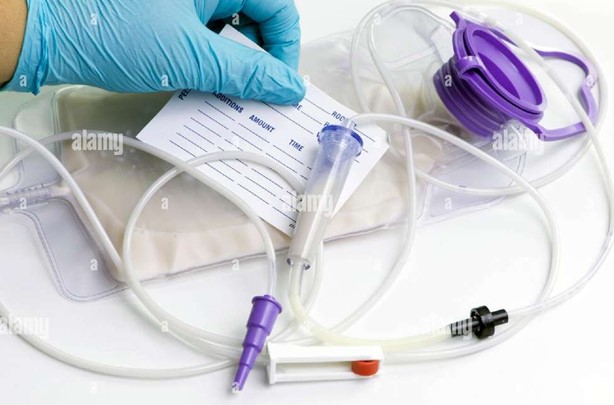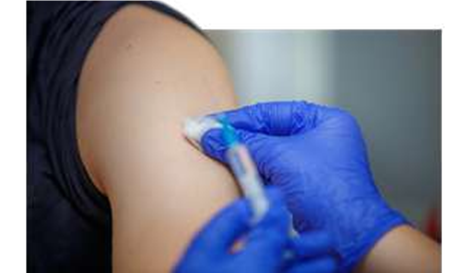A charge nurse is observing a newly licensed nurse administer an enteral feeding to a client who has an established gastrostomy tube.
Which of the following actions by the newly licensed nurse indicates that the charge nurse should intervene?
The nurse checks the volume of the aspirate.
The nurse checks the pH of the aspirate.
The nurse administers 15 mL of water before administering the feeding.
The nurse adds food coloring to the tube feeding.
The Correct Answer is D

This action indicates that the charge nurse should intervene because adding food coloring to the tube feeding is not recommended and can cause adverse effects such as aspiration, diarrhea, and allergic reactions.
Choice A is wrong because checking the volume of the aspirate is a correct action to assess gastric residual volume and prevent complications such as nausea, vomiting, and aspiration.
Choice B is wrong because checking the pH of the aspirate is a correct action to verify the placement of the NG tube and prevent accidental administration of enteral feeding into the lungs.
Choice C is wrong because administering 15 mL of water before administering the feeding is a correct action to flush the NG tube and prevent clogging.
Normal ranges for gastric residual volume are less than 250 mL for adults and less than 5 mL/kg for children. Normal ranges for pH of gastric aspirate are less than 5.5 for adults and less than 4 for children.
Nursing Test Bank
Naxlex Comprehensive Predictor Exams
Related Questions
Correct Answer is B
Explanation
Justice is the ethical principle of treating the patient fairly and equally among staff when making assignments. The charge nurse is upholding this principle by ensuring that the workload is distributed evenly and that no staff member is overburdened or underutilized.
Choice A is wrong because Veracity is wrong because veracity is the ethical principle of telling the truth to the patient.
This principle is not relevant to the scenario of making assignments.
Choice C is wrong because Autonomy is wrong because autonomy is the ethical principle of respecting the patient’s right to make their own healthcare decisions.
This principle is not relevant to the scenario of making assignments.
Choice D is wrong because Fidelity is wrong because fidelity is the ethical principle of keeping promises to the patient.
This principle is not relevant to the scenario of making assignments.
Correct Answer is C
Explanation

The correct answer is choice C. Allergy to gelatin is a contraindication for the inactivated influenza vaccine because gelatin is one of the ingredients in the vaccine. People with severe, life-threatening allergies to any ingredient in a flu vaccine (other than egg proteins) should not get that vaccine.
Choice A is wrong because pregnancy is not a contraindication for the inactivated influenza vaccine. In fact, pregnant people are recommended to get a flu shot because they are at higher risk of developing serious flu complications.
Choice B is wrong because immunosuppression is not a contraindication for the inactivated influenza vaccine. People with weakened immune systems can get a flu shot, but they should avoid the nasal spray flu vaccine which contains live viruses.
Choice D is wrong because moderate illness with fever is not a contraindication for the inactivated influenza vaccine. People who are moderately ill can still get a flu shot, but they should wait until they recover if they have a severe illness.
Whether you are a student looking to ace your exams or a practicing nurse seeking to enhance your expertise , our nursing education contents will empower you with the confidence and competence to make a difference in the lives of patients and become a respected leader in the healthcare field.
Visit Naxlex, invest in your future and unlock endless possibilities with our unparalleled nursing education contents today
Report Wrong Answer on the Current Question
Do you disagree with the answer? If yes, what is your expected answer? Explain.
Kindly be descriptive with the issue you are facing.
